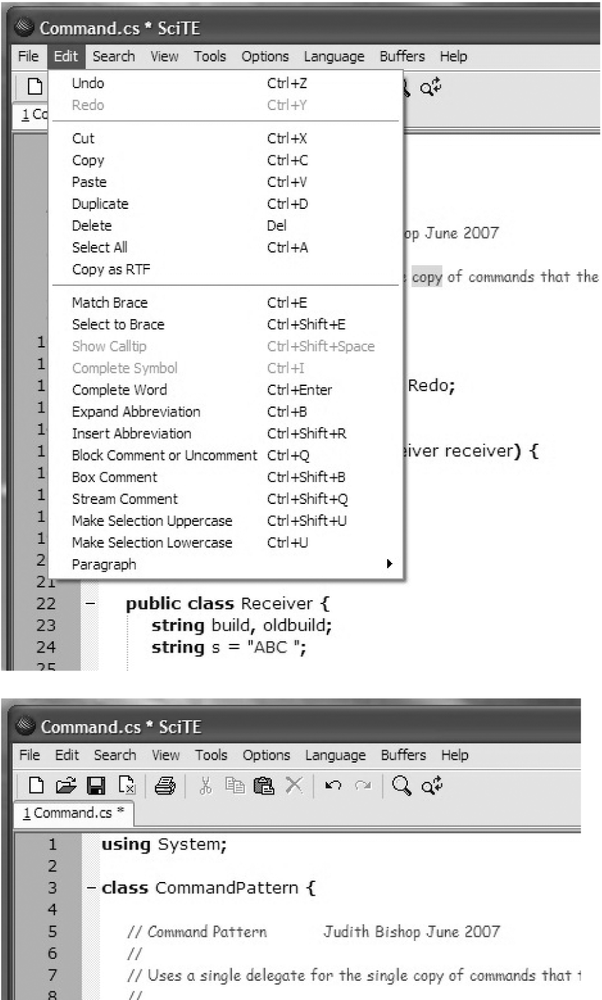Command Pattern
Role
The Command pattern creates distance between the client that requests an operation and the object that can perform it. This pattern is particularly versatile. It can support:
Sending requests to different receivers
Queuing, logging, and rejecting requests
Composing higher-level transactions from primitive operations
Redo and Undo functionality
Illustration
The Command pattern is used in the menu systems of many well-known applications. An example of such an interface is shown in Figure 8-5 (which happens to be the program editor I usually use). Note that there are different insert and copy operations.

Figure 8-5. Command pattern illustrationâmenus
The figure shows two ways in which commands can be activated: select them from a drop-down textual menu, or click on the icons that represent each of the operations. In the top menu, there could be a receiver that handles word processing cut-and-paste-type operations, and another for brace matching and changing case. For most of these commands, Undo and Redo functions will also be appropriate; however, some operations are indicated in gray, which means they cannot be undone or repeated. Furthermore, in systems such as this one, there is usually a way of stringing together some commands so that they can be executed in a batch later. These so-called macro commands are common in graphics and photo-editing programs.
Design
The ...
Get C# 3.0 Design Patterns now with the O’Reilly learning platform.
O’Reilly members experience books, live events, courses curated by job role, and more from O’Reilly and nearly 200 top publishers.

